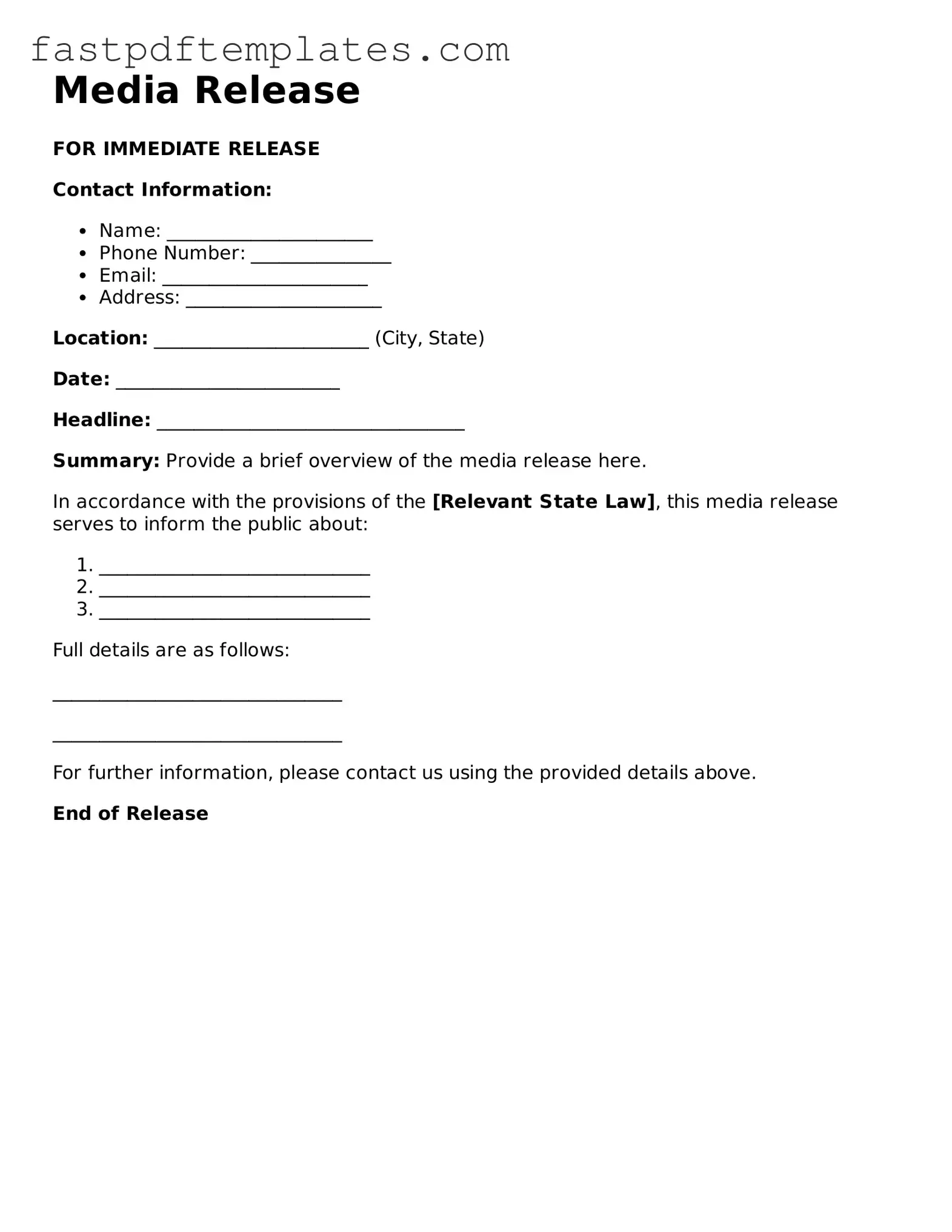The Media Release form is quite similar to a Consent Form. Both documents serve the purpose of obtaining permission from individuals before their likeness or personal information is used in any form of media. A Consent Form is often used in medical or educational settings, ensuring that individuals understand what they are agreeing to. Just like a Media Release, it outlines the scope of use and the rights of the individual, providing clarity on how their information will be utilized.
Another document that shares similarities with the Media Release form is the Waiver of Liability. This document is often used in events or activities where there may be risks involved. Participants sign a Waiver of Liability to acknowledge that they understand the risks and agree not to hold the organizers responsible for any injuries. Similarly, a Media Release form protects the media outlet by ensuring that the individual acknowledges and accepts the potential consequences of their image or information being shared.
The Photo Release form is also closely related to the Media Release. This document specifically focuses on the use of photographs, allowing photographers or organizations to use images of individuals for promotional purposes. Like the Media Release, it grants permission and outlines how the images will be used, ensuring that the rights of the individual are respected and protected.
In the realm of film and television, the Actor Release form is another document that resembles the Media Release. This form is used to obtain consent from actors or performers for their appearances in productions. It details how their performances will be used and distributed, similar to how a Media Release specifies the use of an individual's likeness in various media formats.
The Talent Release form is another comparable document, often utilized in advertising and promotional contexts. This form is specifically designed for models, actors, and other talent, allowing companies to use their performances or likeness in marketing materials. Just like the Media Release, it ensures that the talent is aware of how their image will be used and protects the rights of both parties involved.
A Release of Information form is also similar, particularly in healthcare settings. This document allows healthcare providers to share a patient’s information with third parties, such as insurers or other medical professionals. Like the Media Release, it emphasizes the importance of consent and transparency regarding how personal information will be used and shared.
The Liability Release form, often used in sports or recreational activities, is akin to the Media Release as well. Participants sign this document to acknowledge the risks involved in an activity and to release the organizers from liability. While the focus is on safety and risk, both forms prioritize informed consent and the understanding of potential outcomes.
Lastly, the Non-Disclosure Agreement (NDA) can also be seen as a distant relative to the Media Release. While an NDA primarily focuses on protecting confidential information from being disclosed, both documents require individuals to understand and agree to specific terms before participating in an activity or project. This mutual understanding helps maintain trust and clarity between parties involved.
